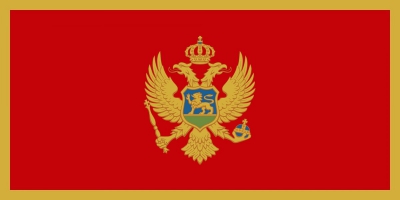The Christmas Uprising (Serbian: , romanized: Boini ustanak), also known as the Christmas Rebellion ( , Boina pobuna), was a failed uprising in Montenegro led by the Greens in early January 1919. The military leader of the uprising was Krsto Popovi and its political leader was Jovan Plamenac.
The catalyst for the uprising was the decision of the controversial Great National Assembly of the Serb People in Montenegro, commonly known as the Podgorica Assembly. The assembly decided to directly unify the Kingdom of Montenegro with the Kingdom of Serbia, which would shortly after become the Kingdom of Yugoslavia. Following a questionable candidate selection process, the unionist Whites outnumbered the Greens, who were in favour of preserving Montenegrin statehood and unification in a confederal Yugoslavia.
The uprising reached a climax in Cetinje on 7 January 1919, which was the date of Eastern Orthodox Christmas. The unionists with support from the Serbian Army defeated the rebel Greens. In the aftermath of the uprising, the dethroned King Nikola of Montenegro was forced to issue a call for peace, since many homes were destroyed. As a result of the uprising, a number of participants complicit in the uprising were tried and imprisoned. Other participants in the uprising fled to the Kingdom of Italy, meanwhile some retreated to the mountains and continued guerrilla resistance under the banner of the Montenegrin Army in exile, which lasted until 1929. The most notable guerilla militia leader was Savo Raspopovi.
Montenegro ( (listen); Montenegrin: Crna Gora, Црна Гора, lit. 'Black Mountain', pronounced [tsr̩̂ːnaː ɡǒra]; Albanian: Mali i Zi) is a country in Southeastern Europe. It is located on the Adriatic Sea and is a part of the Balkans, sharing borders with Serbia to the northeast, Bosnia and Herzegovina to the north and west, Kosovo to the east, Albania to the southeast, the Adriatic Sea and Croatia to the southwest, and a maritime boundary with Italy. Podgorica, the capital and largest city, covers 10.4% of Montenegro's territory of 13,812 square kilometres (5,333 sq mi), and is home to roughly 30% of its total population of 621,000.During the Early Medieval period, three principalities were located on the territory of modern-day Montenegro: Duklja, roughly corresponding to the southern half; Travunia, the west; and Rascia proper, the north. The Principality of Zeta emerged in the 14th and 15th centuries. From the late 14th century to the late 18th century, large parts of southern Montenegro were ruled by the Venetian Republic and incorporated into Venetian Albania. The name Montenegro was first used to refer to the country in the late 15th century. After falling under Ottoman rule, Montenegro regained its independence in 1696 under the rule of the House of Petrović-Njegoš, first as a theocracy and later as a secular principality. Montenegro's independence was recognised by the Great Powers at the Congress of Berlin in 1878. In 1910, the country became a kingdom.
After World War I, the kingdom became part of Yugoslavia. Following the breakup of Yugoslavia, the republics of Serbia and Montenegro together proclaimed a federation. Following an independence referendum held in May 2006, Montenegro declared its independence and the confederation peaceably dissolved.Montenegro has an upper-middle-income economy and ranks 48th in the Human Development Index. It is a member of the United Nations, NATO, the World Trade Organization, the Organization for Security and Co-operation in Europe, the Council of Europe, and the Central European Free Trade Agreement. Montenegro is also a founding member of the Union for the Mediterranean, and is currently in the process of joining the European Union.

1919Jan, 7
Montenegrin guerrilla fighters rebel against the planned annexation of Montenegro by Serbia, but fail.
Choose Another Date
Events on 1919
- 5Jan
Nazi Party
The German Workers' Party, which would become the Nazi Party, is founded. - 23Mar
Italian Fascism
In Milan, Italy, Benito Mussolini founds his Fascist political movement. - 4May
Treaty of Versailles
May Fourth Movement: Student demonstrations take place in Tiananmen Square in Beijing, China, protesting the Treaty of Versailles, which transferred Chinese territory to Japan. - 19May
Turkish War of Independence
Mustafa Kemal Atatürk lands at Samsun on the Anatolian Black Sea coast, initiating what is later termed the Turkish War of Independence. - 29May
General relativity
Albert Einstein's theory of general relativity is tested (later confirmed) by Arthur Eddington and Andrew Claude de la Cherois Crommelin.

 English
English  español
español  français
français  português
português  русский
русский  العربية
العربية  简体中文
简体中文 